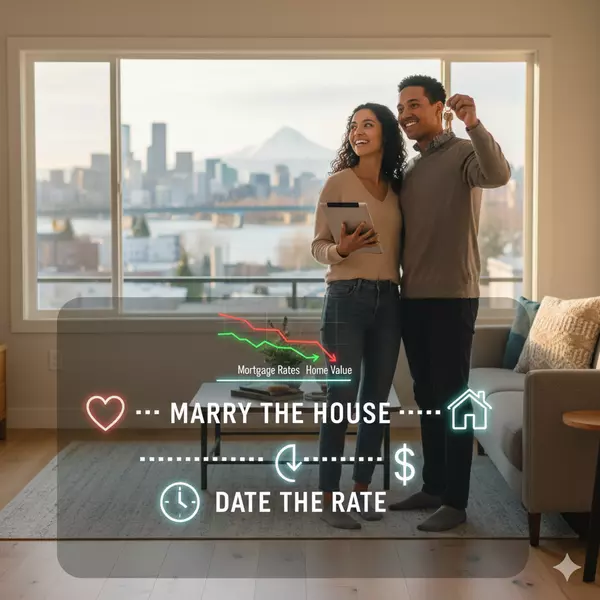Should a Buyer Wait for Interest Rates to Drop from 6.5% to 5.5%?
Categories
- All Blogs (462)
- For Sale By Owner (15)
- Local Events (6)
- Affordability (31)
- Agent Value (86)
- Buying Tips (192)
- Closing Costs (1)
- Community Support (1)
- Debt-Free Living, (1)
- Design (8)
- Downsize (5)
- Economy (23)
- Equity (23)
- Financial Planning (32)
- First-Time Home Buyer (137)
- For Sale by Owner (2)
- Forecasts (14)
- Foreclosures (4)
- Foster Care Resrources (1)
- Fun Tips (5)
- Giving Back (1)
- Home Buying (237)
- Home Inspections (1)
- Home Prices (63)
- Home Selling (170)
- Inventory (34)
- Local (24)
- Local Non-Profits (1)
- Luxury / Vacation (1)
- Market Update (35)
- Mortgage (50)
- Move-Up (2)
- New Construction (7)
- Newsletter (9)
- Open House (1)
- Portland OR (1)
- Portland OR Affordability (2)
- Portland OR Homes (2)
- Portland OR Real Estate (3)
- Portland-Vancouver Home Value (1)
- Portland-Vancouver Inventory (1)
- Real Estate Investing (7)
- Rent vs Buy (8)
- Restaurant Reviews (5)
- Seasonal (11)
- selling tips (125)
- Technology (1)
- Teens & Young Adults (11)
- Trends (15)
- Vancouver WA (1)
- Vancouver WA Affordability (2)
- Vancouver WA Real Estate (4)
- Vancouver WA Selling Tips (1)
- Wealth Building (12)
Recent Posts

Raising 100 Hands for Foster Care: A New Local Effort to Support SW Washington Foster Families

Mortgage Rate Forecast: Why Lower Rates Are Coming to Vancouver WA and Portland OR

Buyer Power is Back! How to Negotiate Your Best Deal in Portland OR & Vancouver WA

The Best Time to Buy is Now: Your October Advantage in Vancouver WA & Portland OR

What Vancouver & Portland Buyers Need Most (And How Our Local Market is Adjusting)

Mortgage Rates in Portland & Vancouver: Why "Marry the House, Date the Rate" is Your 2025 Strategy

Unpacking Buyer Closing Costs in Vancouver WA & Portland OR

Closing Costs Unpacked: The Critical Differences for Buyers in Portland (OR) vs. Vancouver (WA)

Downsizing Without Debt: How Portland & Vancouver Homeowners Are Buying Their Next House in Cash

3 Reasons Affordability Is Showing Signs of Improvement for Portland & Vancouver Buyers This Fall




